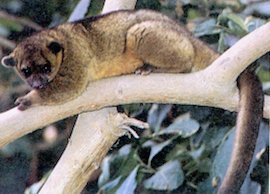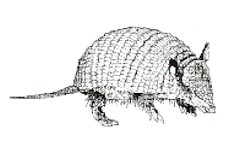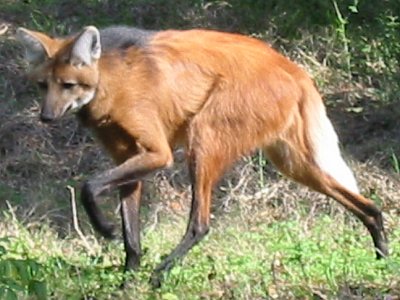The
Amazonian Omnivores

www.geocities.com/RainForest/4076/index43.html
|
Name: |
Kinkajou |
| Description: | rounded head,small ears, sharp teeth, long body, short legs, soft and thick uniform brown fur |
| Habitat: | tropical forests from Southern Mexico to Southern Brazil/ Lives its life in upper and middle canopy, arboreal |
| Diet: | fox, tayra, margay, ocelot, jaguar, jaguarundi |
|
Name: |
Giant Armadillo |
| Description: | hundreds of small, sharp teeth, five claws to a paw, armor is shades of brown, beige, and black |
| Habitat: | forests of Eastern South America |
| Diet: | insects, plants, small vertebrates, berries, bird eggs |

www.kidsplanet.org/factsheets/armadillo.html

www.growf.org/photos/aud-zoo-maned-wolf-2.jpg
|
Name: |
Maned Wolf. |
| Description: | about 3 feet tall, gold-red fur on most of the body, black on muzzle, white on tail and throat |
| Habitat: | Southern edge of the Amazon Rain Forest |
| Diet: | small mammals such as field mice, fruit on the ground |